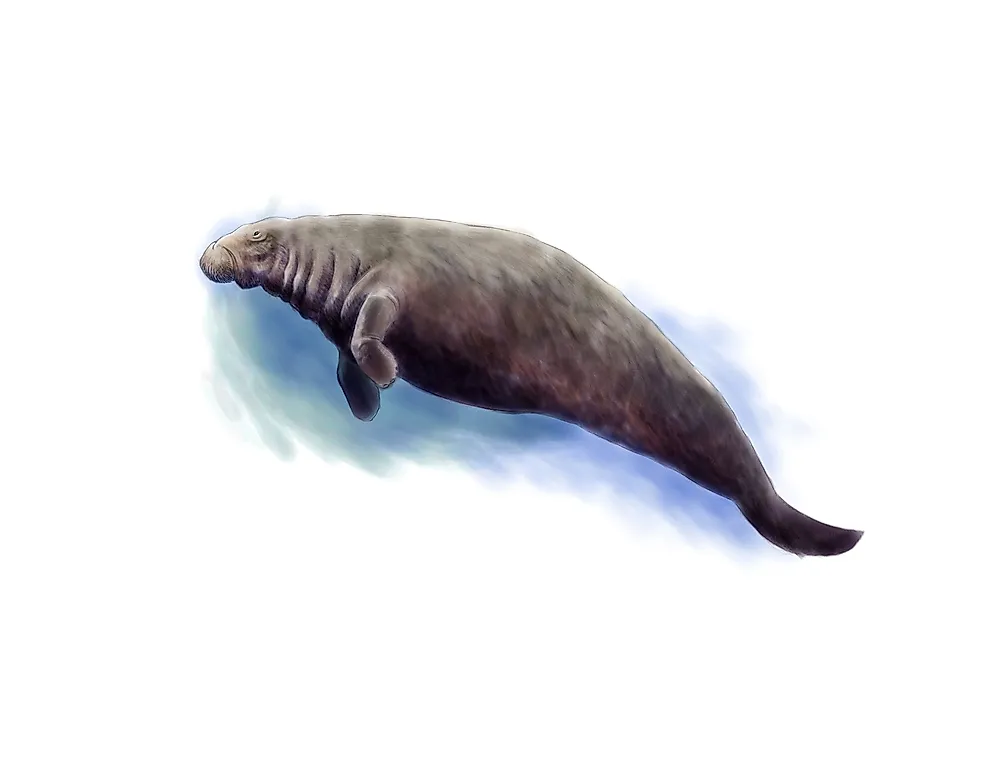Steller Sea Cow Facts: Extinct Animals of the World

Steller’s sea cow (Hydrodamalis gigas) is an extinct Sirenia which was found in 1741 around Commander Island right between Russia and Alaska by Georg W Steller. Steller, who was a naturalist, discovered this species when their vessel, Vitus, wrecked on Bering Island. An adult sea cow was approximately 30 ft long and weighed up to 10 metric tons, but within 27 years of their discovery, they became extinct. People hunted these slow-moving species for skin, fat, and meat.
Description
Weighing between 8-10 metric tons, these mammals were the largest of the Holocene epoch other than whales. Their massive bodies helped them conserve heat while lowering the surface-area-to-volume-ratio. Unlike the other sirenians like whales, the sea cow could not wholly submerge under water and to protect the un-submerged part from drying up or being injured by ice and sharp rocks; these mammals had a 1-inch thick outer skin. Another adaptation the sea cow had was 3 to 4 inches blubber. The sea mammals were brownish-black in color while some had white patches. Steller sea cows had a smooth back with some rough edges and depressions. Its forelimbs were 26 inches long with a fork-shaped tail.
The sea cow had a small head with a large upper mouth which extended beyond lower lip and instead of teeth; this toothless mammal had 1.5 inches interlacing white-bristles on the upper lip. The snout of the sea cow pointed downwards, and its nostril was 2 inches wide and long. The animal had smaller eyes which were situated between the ears and nose and to protect the eyes while swimming they had a nictitating membrane. The spine of this animal had 17 thoracics, 3 lumbar, 34 caudal, and 7 cervical vertebrae.
Behavior
The sea cow was an herbivore which spent most of its time feeding and lifting its head after every 5 minutes to breathe. Steller was an algivore which feed on the softer part of kelp and seagrasses. These monogamous mammals were very social and lived in smaller groups where they helped the injured sea cows while protecting the young ones by always keeping them in front when herding. With a gestation period of over a year, the mating season started in early spring, and they delivered their calves in autumn. Female sea cows gave birth to one calf.
Extinction
According to Stejneger, there were less than 1,500 sea cows by 1741 when Steller discovered them, which means that there was an already existing danger. The seal hunters and fur traders hunted these animals, and they followed the route used by Vitus Bering when they first discovered the sea cows. In 1754 these mammals were hunted by Ivan Krassilnikov and later in 1762 Korovin came to pursue them. The other people who came after 1772 like Bragin Dimitri did not find the sea cow and assumed that they were extinct.
After Steller and crew successfully hunted and butchered the animals, more maritime fur traders were inspired, and they detoured to the Commander Islands to replenish their food stock during their North Pacific expedition. The Aleut people who killed these mammals migrated west after learning of the presence of these animals in the Aleutian Islands. The aboriginal people might have indirectly caused the extinction of sea cows when they harvested the sea otters. With the reduction in the sea otter population, the number of urchins increased, which in turn lowered the kelp stock which was the primary food of the Stellar sea cow.











